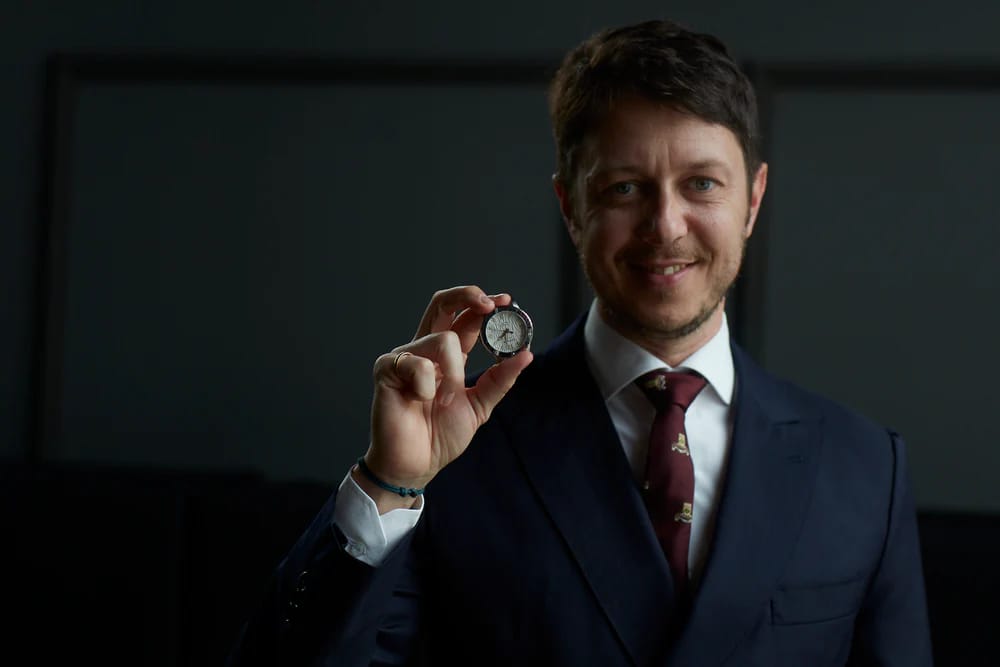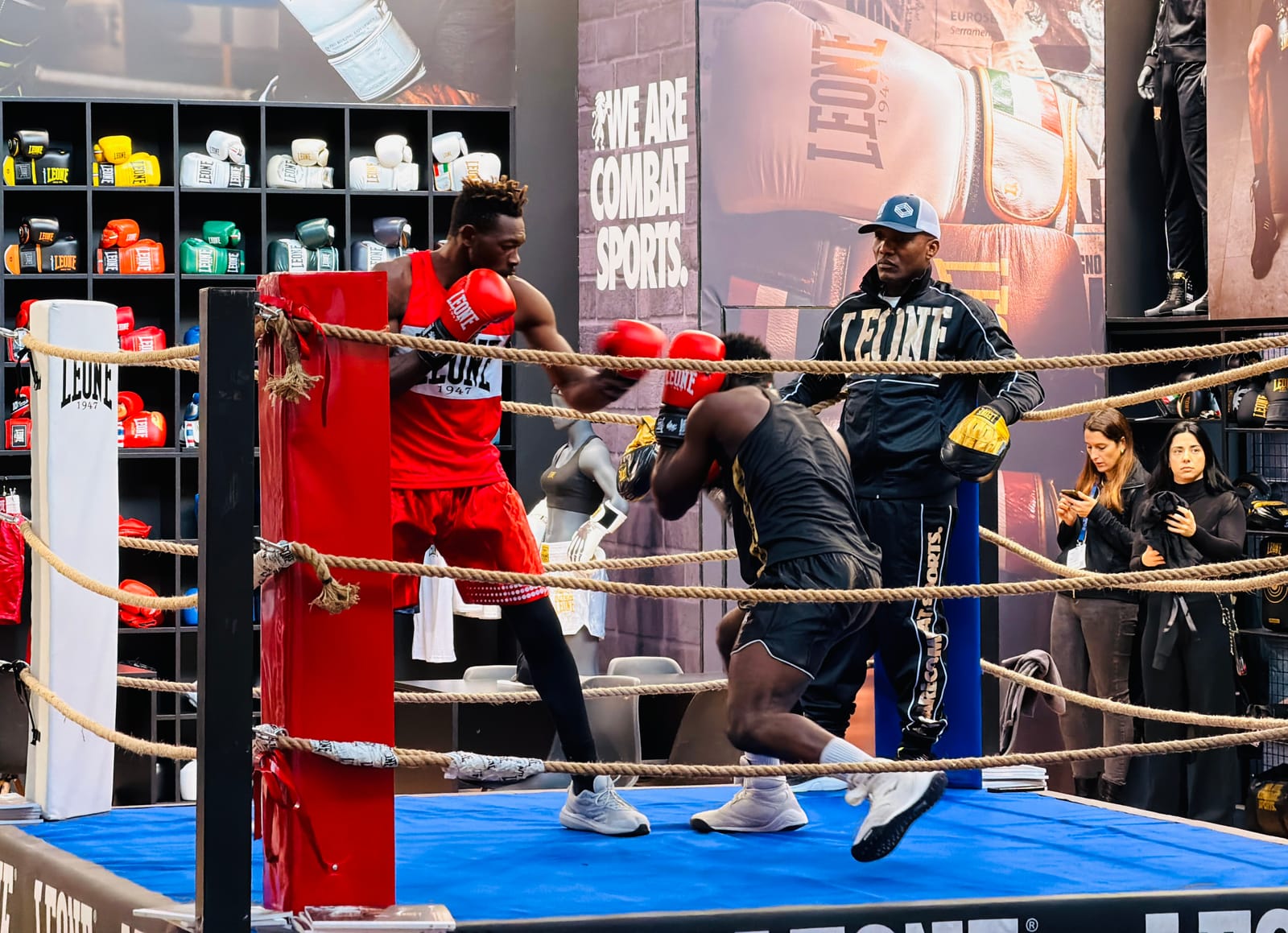What happens when a 1950s Swiss watch brand wakes up after half a century?
In the 1950s and 60s, Trematic was one of many Swiss watchmakers producing mechanical timepieces with impressive complications like moon phases and full calendars. Like hundreds of peers, the brand went dark during the quartz crisis, lying dormant for over 50 years. But in 2022, entrepreneur Daniele Campagnano brought Trematic back to life – blending heritage codes with modern execution and a focus on integrity over hype.
As part of our Fashion Made podcast, we sat down with Daniele to unpack the realities behind “heritage revival”: the romance of origin stories, the grind of quality, and why honesty beats engineered scarcity. This isn’t a smartwatch vs. mechanical debate; it’s a masterclass in building trust in a microbrand era, where every bevel, movement choice, and warranty policy tells a bigger story about values.
Watch the full conversation below!
Don’t have time to watch the full video? Scroll down for a summary of key takeaways and noteworthy quotes.
Key Takeaways
1) Start with truth, then ship with quality.
Trematic didn’t go straight to reissuing archive models. Instead, the team built three new, vintage-inspired collections first, making mistakes, correcting them, and raising the quality bar until it felt worthy of the heritage.
''Before we could touch the watches Trematic made in the past, we had to reach the quality that might respect what the brand once stood for.''
This “quality gate” gave credibility to later archive pieces and signaled integrity to early adopters.
2. “Swiss Made” isn’t magic; quality is everywhere.
Switzerland is synonymous with watchmaking, but Campagnano is quick to reframe. Tradition matters, but quality exists globally – Japan, China, the U.S. all produce components of remarkable standard.
''It’s not a matter of country, but of quality. Switzerland is important for tradition, but you can find very high quality in other places too.''
For Trematic, Swiss roots anchor the story, but credibility comes from execution, not just a label.
3. Integrity beats artificial scarcity.
Luxury brands have leaned heavily on the “unobtainium”- tight supply and waiting lists that create hype. Trematic rejects this, seeing it as a short-term game.
''We are not selling everything in one second. But we do things with quality, and honesty will always pay.''
Engineered scarcity may sell fast, but authenticity builds respect that compounds.
4. The microbrand funnel is long (by design).
Impulse buying doesn’t happen at the $800–$1,000 level. Trematic customers typically visit the site 20–30 times before clicking purchase. They demand high-res photos from every angle, wrist shots, movement close-ups, and full explanations of why design choices were made.
''If you don’t have pictures of all the angles, it’s not enough. They want a worn picture. They want to talk to you.''
For other industries: buyers of enthusiast products need content depth, not just pretty campaign shots.
5. Independent credibility moves mountains.
One detailed review from a respected independent voice sent Trematic’s site traffic soaring across Australia, Singapore, and the UK.
''When the review came out, the website exploded. We didn’t pay him- he chooses what to review. That authenticity matters.''
Lesson: cultivate relationships with credible reviewers who aren’t “pay-to-play.” A single earned endorsement can outstrip months of paid campaigns.
6. Luxury ≠ utility, and that’s okay.
Smartwatches didn’t kill mechanical watches; they just carved out a parallel market. Trematic sees them as entirely different categories.
''Mechanical watches today are not useful to anything. They are jewelry. A smartwatch is utility. They accomplish different targets.''
Trying to fuse the two, he argues, risks pleasing neither. The value of mechanical timepieces is symbolic, aesthetic, and emotional, not functional.
7. Design for longevity, not just launches.
Trematic offers a five-year warranty (vs. the industry standard two years) and builds watches with movements whose parts will be available for decades. This isn’t just a marketing hook; it supports resale value and keeps the brand relevant in the second-hand market.
''A mechanical watch, if serviced properly, can really be passed to your son or grandson.''
Longevity is itself a brand statement in an era of fast obsolescence.
8. Archive and evolve.
Reviving a heritage brand means balancing faithfulness with reinterpretation. Trematic modernizes dimensions (a 36mm design reissued at contemporary sizing) while preserving vintage codes.
''If you revive a brand, you have to be connected to the past. Values, aesthetics, technical choices. Otherwise, the story isn’t true.''
Two tracks – archive reissues and new vintage-inspired designs – keep the brand both rooted and forward-facing.
9. Tech should reinforce trust, not distract.
Campagnano is sceptical about grafting wearables’ functionality onto mechanical watches, but he sees potential in tech that protects authenticity.
''Blockchain for provenance is interesting. But it should not become a gimmick. It has to connect to integrity.''
The sweet spot: use technology to confirm truth (origin, ownership, warranty), not to pretend mechanical watches are Fitbits.
10. Listen like a small company, execute like a big one.
Trematic embraces a “pull” model, absorbing enthusiast feedback from blogs, forums, and trade shows and incorporating it quickly. Unlike mega-brands that can dictate trends, microbrands win on responsiveness.
''Our ears are very open. The mission is to interpret what customers give to us and deliver what they need.''
This combination – small-company empathy with big-company discipline – is a formula that translates far beyond watchmaking.
Join the conversation
Trematic’s revival story is about more than watches; it’s about how heritage, honesty, and craftsmanship can find new relevance in a digital-first, hype-saturated world. But what do you think?
- Does integrity still outcompete scarcity in 2025?
- Should heritage revivals stay faithful to their archives, or push boldly into new design territory?
- And where should technology play a role in strengthening provenance and trust?
Drop your thoughts in the comments: we’d love to hear how you see the future of luxury being rewritten.






